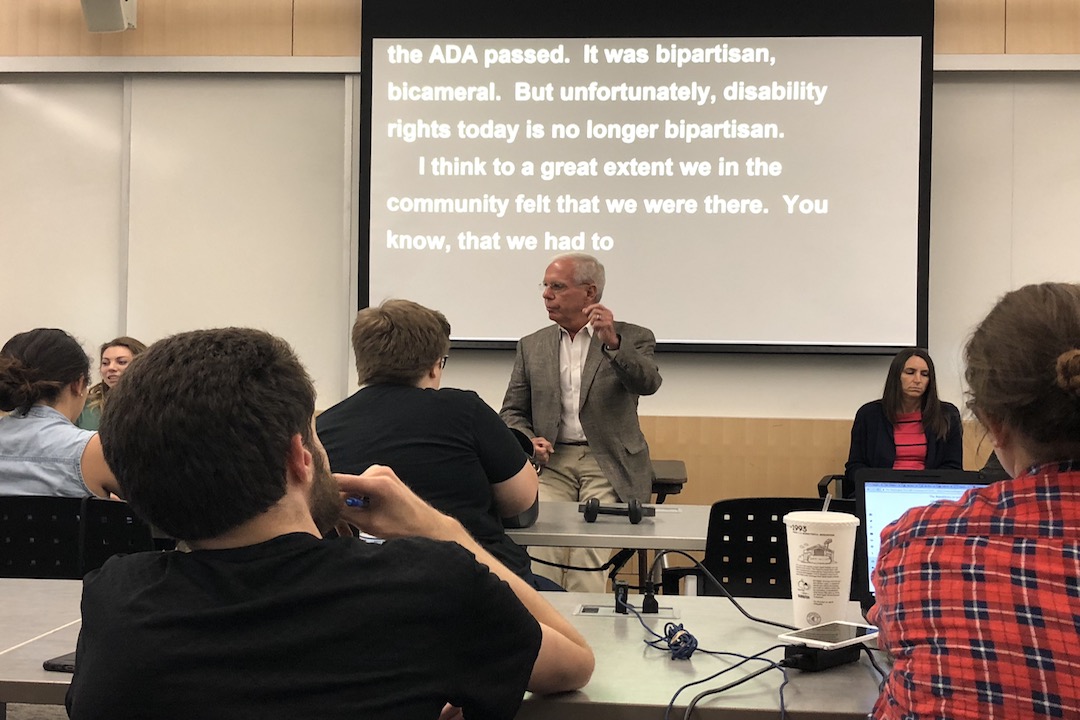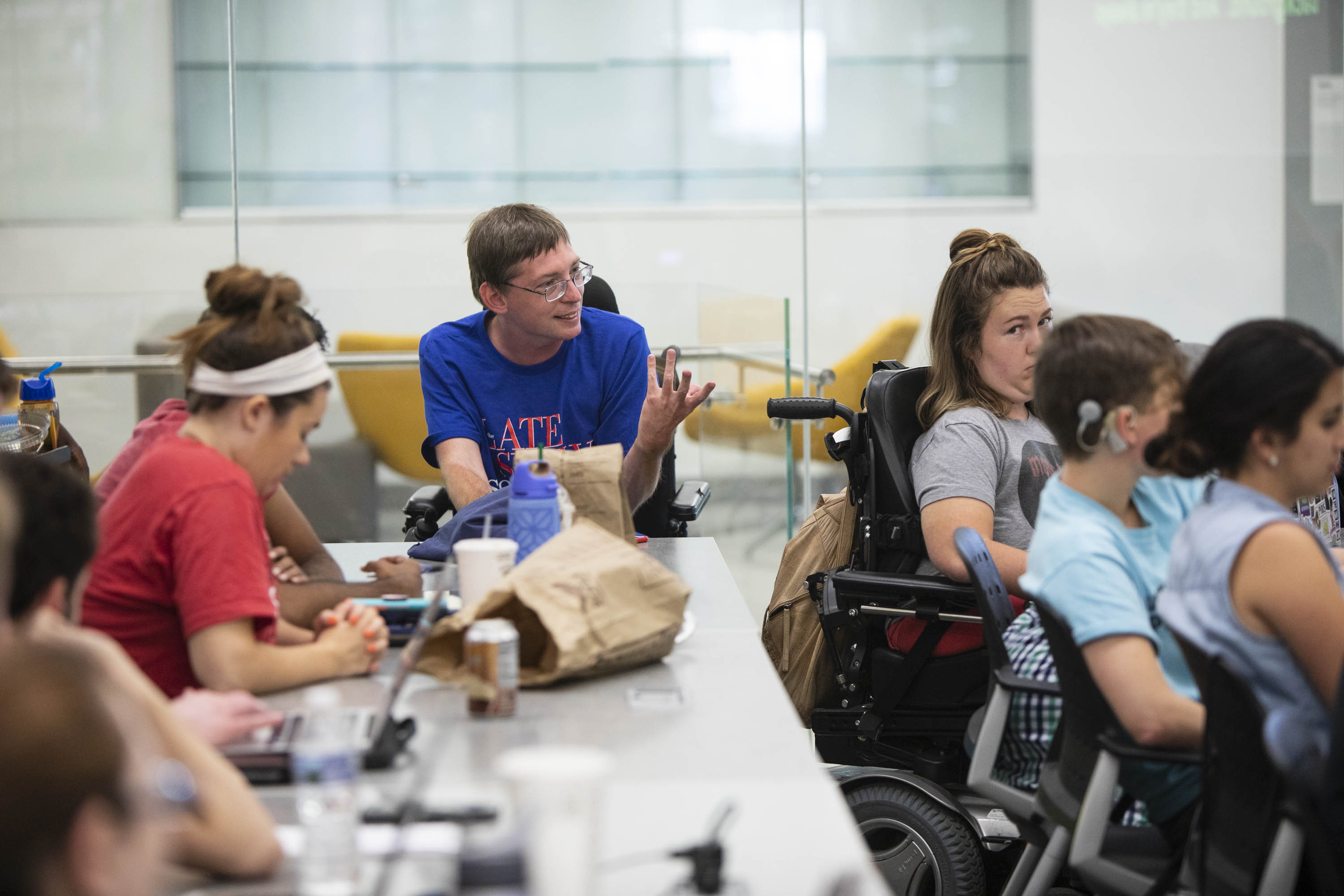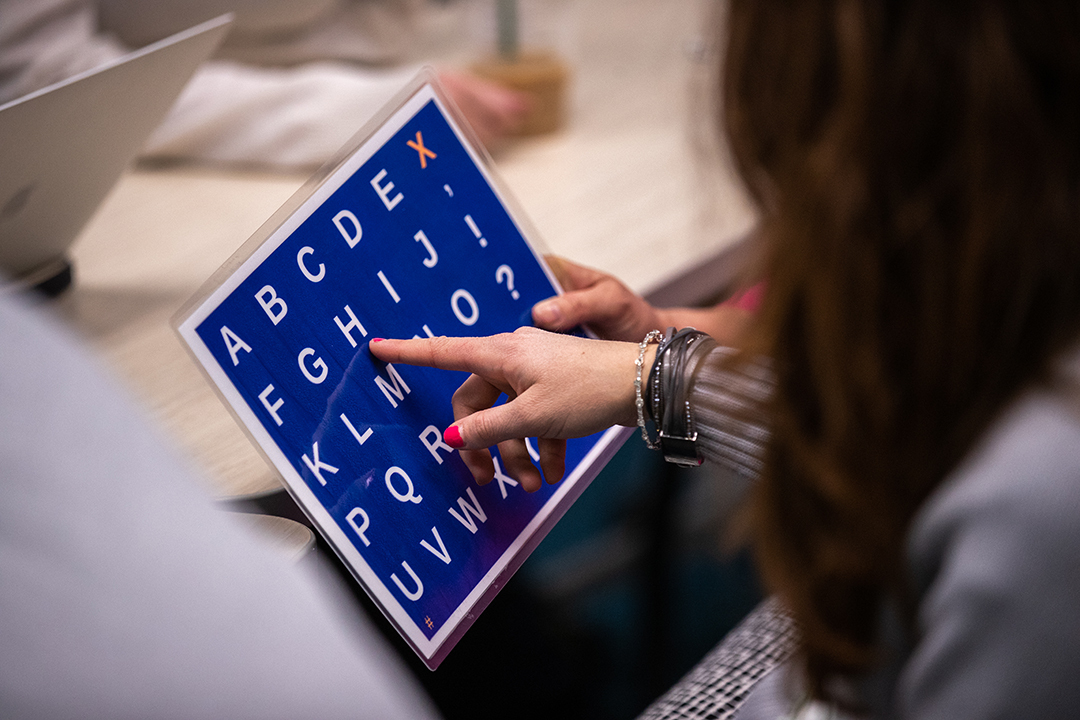This year marked the 30th anniversary of President George H.W. Bush signing the Americans with Disabilities Act (ADA), a civil rights law that prohibits discrimination based on disability, requires employers to provide reasonable accommodations to employees with disabilities and imposes accessibility requirements on public accommodations.
Natasha Dupee, senior disabilities services associate in the George Washington University Office of Disability Support Services, spoke with GW Today about how the law has helped a generation of Americans with disabilities thrive and the barriers to equal opportunity that remain.
Q: What has the ADA meant to people living with disabilities since it became law 30 years ago?
A: The ADA is a baseline for accessing public accommodations including education, housing, employment, recreation and transportation. Initial mandates involved measures to increase admission to schools, accessibility of buildings and roads, discretion with diagnosis and recruitment for careers. With these strides for access, the ADA has encouraged persistent advocacy for the equitable inclusion of people with disabilities wherever they want to thrive, be it in entertainment, entrepreneurship, elected and organizational leadership or other industries.

Natasha Dupee, senior disabilities services associate in the George Washington University Office of Disability Support Services. (Courtesy photo)
Since its inception, the ADA has forwarded a civil rights agenda. This law postulates that ability, both transient or chronic, can impact all people. As the nation repeatedly reckons with racial and socioeconomic disparities, people with disabilities engage in similar patterns of advocacy due to intersectionality. Intersectionality suggests that one cannot accept justice solely for their ability status without ensuring freedom from discrimination by race, sex and other protected identities.This has prompted a comprehensive pursuit of justice and inclusion for people living with disabilities to continue even after the passing of the ADA.
Q: What has been the ADA’s role in making institutions of higher learning more accessible?
The ADA prompts proactive inclusive practices. Vetting ideas and initiatives in higher education increasingly requires metrics for assessing then mitigating barriers to access.
The educational framework of Universal Design and Learning (UDL) establishes conditions to meet the greatest needs of all students without requiring further accommodations or decreasing academic standards. UDL as a commitment in higher education does not negate individual accommodations or operate as a substitution for the ADA. Instead, it embeds academic accommodations —attempting to create equitable access to course experiences without individuals having to request it. Examples include recording lectures with captioning embedded, providing additional time for testing and applying appropriate color contrast on print material.
The notion of intentionally inclusive programing provides equitable access to students while removing additional burdens and barriers to engaging. GW DSS accomplishes these aims in collaboration with academic programs, procurement, information technology, Colonial Health, facilities, housing and many other campus partners. The office continually registers students for academic and housing accommodations as well as writes letters for students to communicate their academic rights to their professors.
Q: What are some of the major struggles students with disabilities face in gaining accessibility and full inclusion at institutions of higher learning in 2020?
A: By the time students with disabilities engage with institutions of higher learning, they have a precedent—for better or worse—from other educational entities on how schooling will be for them. These disparate backgrounds can impact the timeliness and frequency in which students connect with DSS to get the services they may need.
The onus of seeking disability support services is on the student. However, campus-specific requests for registering with DSS, communicating academic accommodations to professors, and social inequities challenge the inclusion of all students with disabilities. Some students never receive appropriate testing, conclusive diagnoses or intervention services before matriculating to college. These students have insufficient documentation to substantiate their request for academic services, which delays their eligibility for support. At GW, DSS directs them to obtain appropriate testing and clinical diagnosis. However, waiting lists for these services can take months and can be expensive even with health insurance.
Additionally, technical and performance standards differ at the college-level from primary education. Managing this transition can present a learning curve for students who need to adapt to new technologies and time-management systems ranging from scheduling test proctoring and real-time captioning services to implementing electronic notetaking assistance in lieu of peer note takers.
Q: What more can colleges and universities do to advance the goals of the ADA going forward?
A: Forwarding the work of equity and inclusion, as outlined in the ADA, is not an act of charity or a work stream that should be relegated to one office. These acts are a clarion call for universal access.
Centering best practices for persons with disabilities in strategic planning for recruitment, retention, alumni relations and career services provides students with disabilities the opportunity to move beyond survival mode and partake in a life where they can thrive. Colleges and universities must focus more comprehensively on the education of instructional, physical and social barriers to inclusion. Students with disabilities should educate themselves about their rights and responsibilities and universities should educate faculty about their role. All on campus should get connected with their university’s relevant offices.
DSS is disrupting the narrative of who deserves equal access to university experiences and moving from a medical model to social model of case management, by actively facilitating connections across university departments. We have been making great strides to raise awareness and adjust applicable practices across the university.




